
Stoic Beauty is centered between clinical efficacy and time-tested ingredients. It is the balance between traditional botanicals and innovative actives. But what does that mean?

The world of cosmetics can be daunting. There are a lot of products claiming to do a lot of things. There are cheap products and expensive products. There’s luxury, drugstore, and indie brands galore. So how does one navigate it all and find what works for them?
Let’s start by tackling some skincare jargon! When I was first learning about the beauty industry, skincare products, and routines – the terminology was the biggest hurtle. What is a biocompatible ingredient? What does natural beauty mean? What is an active? There’s a lot of beauty specific terminology. Some of it is scientific and some of it is marketing. So, let’s jump in to the basics.
Skin Type
Understanding your skin type is an important step towards finding the right products for you. If you left your skin untreated, what would its natural state be? Understanding this will help you compliment your skin type with the right products.
Oily: Your skin over produces sebum leaving an oily or greasy feeling on the skin.
Dry: Your skin under produces sebum allowing moisture to evaporate from the epidermis.
Combination: Your skin is dry, oily, or both in particular sections of your face. For example, an oily forehead and nose and/or dry cheeks. Or perhaps your skin changes with the seasons: dry in the winter, oily in the summer.
Normal: Nothing to manage here. Your skin doesn’t feel dry, tight, or oily. It’s juuust right – all over.
Skin Conditions or Inclinations
This won’t be an exhaustive list – but should help point out the difference between what is and is not the foundations of your skin (your skin type) – while still influencing what kind of skincare is right for you.
Sensitive: Your skin is highly reactive and prone to inflammation or irritation.
Rosacea: A chronic skin condition that causes inflammation and redness.
Eczema: An umbrella term that encompasses different conditions that cause dry, flakey, and inflamed skin.
Melasma: A form of hyperpigmentation (the overproduction of melanin which produces pigment in the skin) that creates patches of discolouration on the face.
Acne Prone: Your skin breaks out easily.
Ingredient/Product Descriptors | Some decoding required
Organic
This is a regulated term given to organically grown ingredients. However, Canada does not regulate or certify non-food products as organic. For skincare to be certified organic it would likely have been certified by the USDA and therefore contain 95% organic ingredients.
Natural
This is not a regulated term at all and is very open to interpretation. Retailers or brands will be setting their own guidelines for this. For example: Stoic Beauty is PEG-free, artificial fragrance free, silicone-free, and uses no petroleum or petroleum by-products.
Active
This is term for ingredients that are added to a formulation to actively target a skin concern. An active can often be an acid: alpha, beta, and polyhydroxy acids (chemical exfoliants), or ascorbic acid (vitamin C). Retinol and prescription retinoids are also active ingredients. Often the star of the show (or serum) actives are the doer of the product. The ingredient that offers noticeable results beyond skin maintenance. They are also the ingredients where it is important to use heed instructions and precautions. They can be irritating or even damaging if over-used, or even used at the wrong time of day (evening products are usually those that photosensitize the skin). Introduce these ingredients slowly into your routine at lower percentages, building your way up.
Biocompatible
This refers to an ingredient that mimics something within your skin or biology. For example: squalane is an oil derived from olives, sugar cane, or wheat germ that mimics the sebum made by our skin. This makes it easy to absorb and a lightweight protective and moisturizing barrier for your face. It can also refer to the molecule structure of the ingredient. For example, most hyaluronic acid serums contain a mixture of different daltons, molecular sizes, to penetrate different layers of the skin. Unfortunately, many formulators disregard this crucial element of skincare chemistry, and may add active ingredients that are not biocompatible with the skin. This means expensive actives sit on top of the skin and do not penetrate into the skin to do the real work!Product Categories | Cheat Sheet
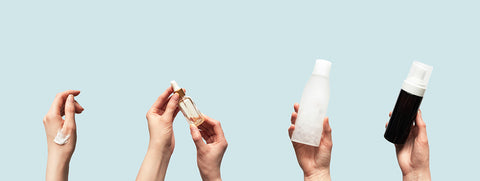
Cleanser
A cleanser cleans your face. It can be oil based or water based and is an essential part of your skin care routine.
Toner
Toners are a few different things. Originally a toner was designed to restore the skins natural pH levels after cleansing. But cleansers have come a long way from bar soap and are generally lower in pH these days. Modern toners are hydrators. They introduce hydration (or gentle, lower percentage actives) to the skin. Depending on your skin concern and skin type, this step can be skipped altogether.
Mist
A mist is just a hydrator in a spray bottle. (Pay attention though to the ingredients in mists, as sometimes they focus on fragrances to create a more luxurious experience. Artificial fragrance and alcohol can actually be quite drying to the skin and undo any hydrating effects.)
Essence
A key step in Korean beauty routines, essence is toner’s cousin. Essences are hydrating and generally comprised of one star ingredient (around 70-98%). This ingredient is often fermented and claims to prepare your skin to better absorb your other products.
Serum/Ampule
Concentrated skin care products with targeted ingredients. Often you will find your active ingredients in a serum. Serums and ampules are generally sold in smaller quantities for higher prices. If you have a specific skin concern, many can be addressed by choosing the right serum. A little can go a long way.
Moisturizer
A key player in your routine, moisturizer keeps hydration locked into the skin and protects and supports your moisture barrier.
Body Butter
A luxurious, rich moisturizer for your body.
Face oil
A pure oil or blend for the face. Oils are powerhouse multitaskers in a whole, natural, and gentle form. While face oils may or may not be fortified with actives, many face oils can function like serums if they are formulated with attention to the chemical composition of the oils. This is where Stoic Beauty’s oils walk the line between a moisturizing oil and serum, as they have been formulated to address specific skin concerns: mature skin, sensitive skin, and redness/rosacea prone skin.
Sunscreen
The ultimate skin care product. Sunscreen has a sun protection factor (SPF) that protects your skin from UV rays. SPF 30 is considered standard for daily use, SPF 50 if you are using actives. Protect that fresh baby skin from the sun!
Well, we have only scratched the surface of all that skincare lingo. If there’s anything I have learned along my terminology journey it is that I know what’s best for my skin. Get to know your skin type and pin point what you’d like to work on. Then you can research what ingredients or products can support your goals. Understanding the ingredients and jargon used in the beauty world has helped me to better listen to my skin and not the display shelves and influencers. Go slowly and enjoy the process of trying products and exploring what they can do for your skin. It’s an intimate exercise. Something to enjoy, just for you.

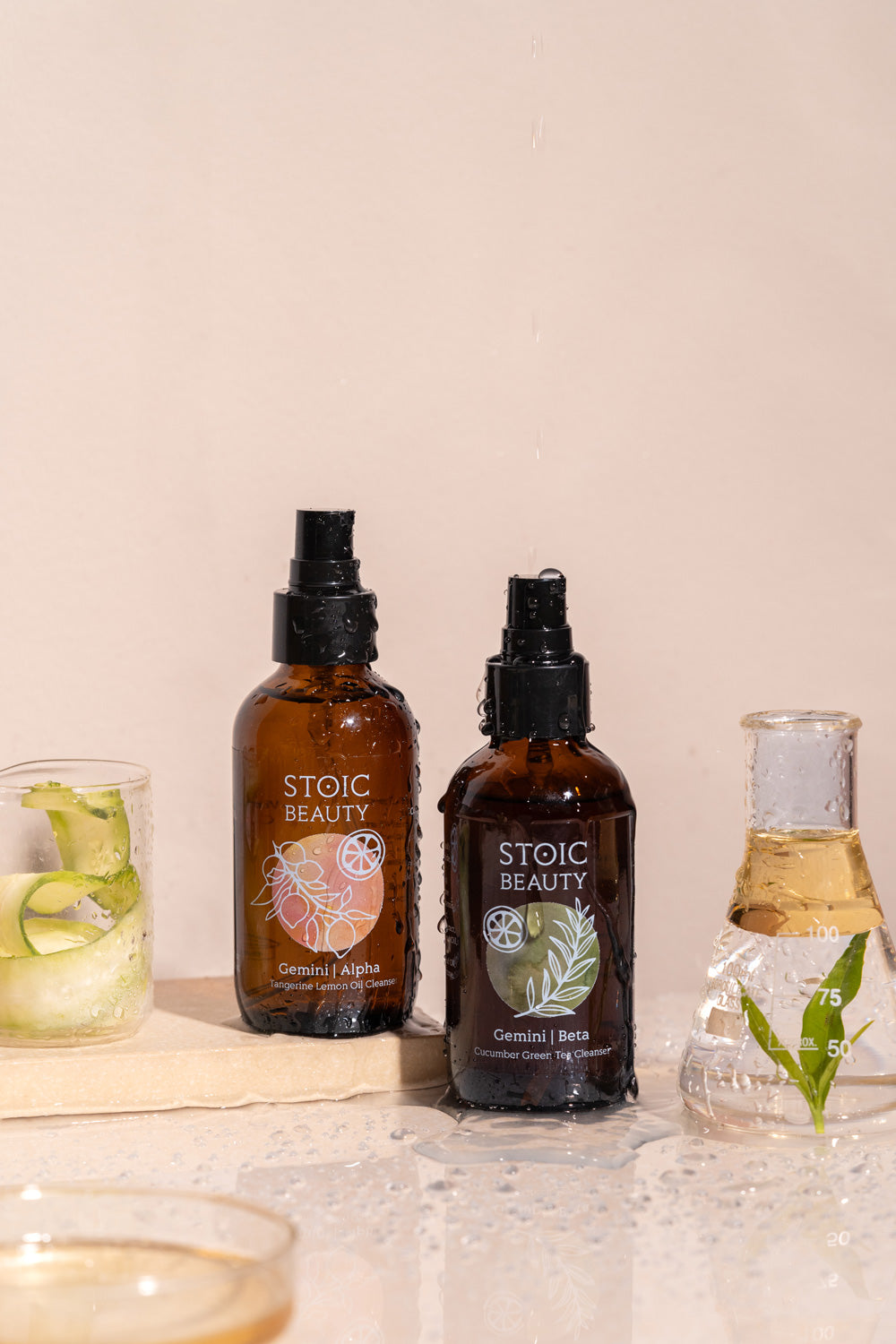
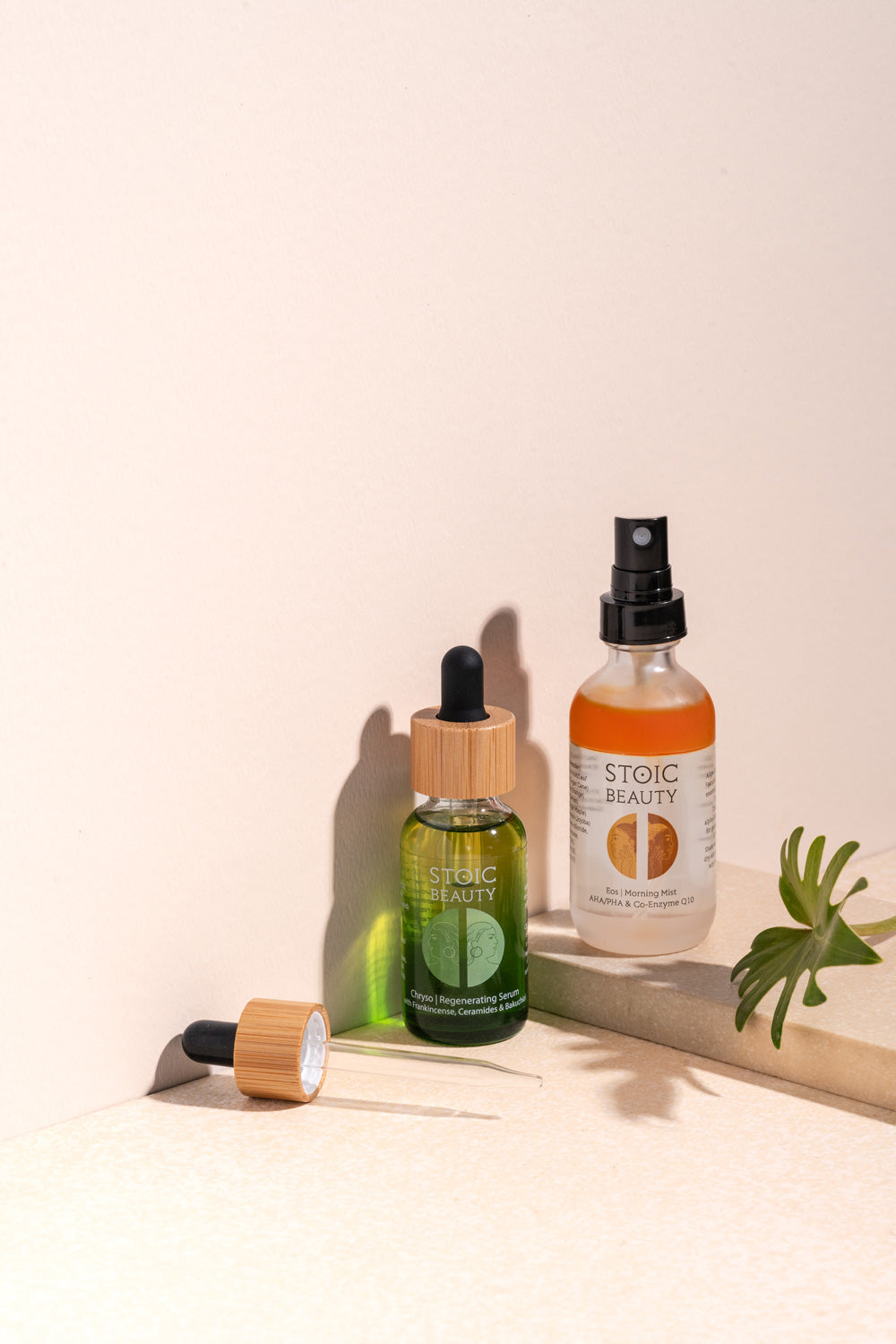
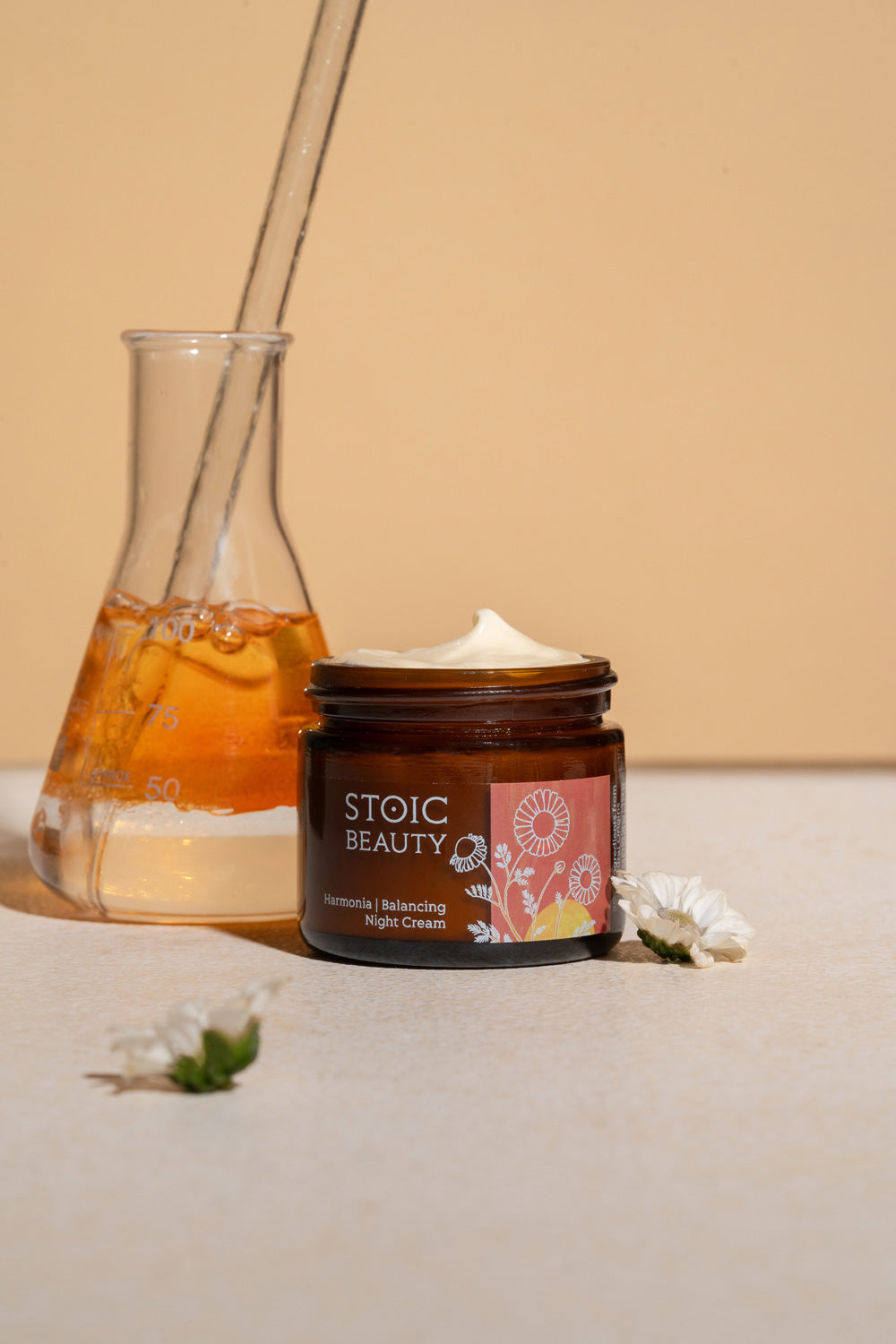
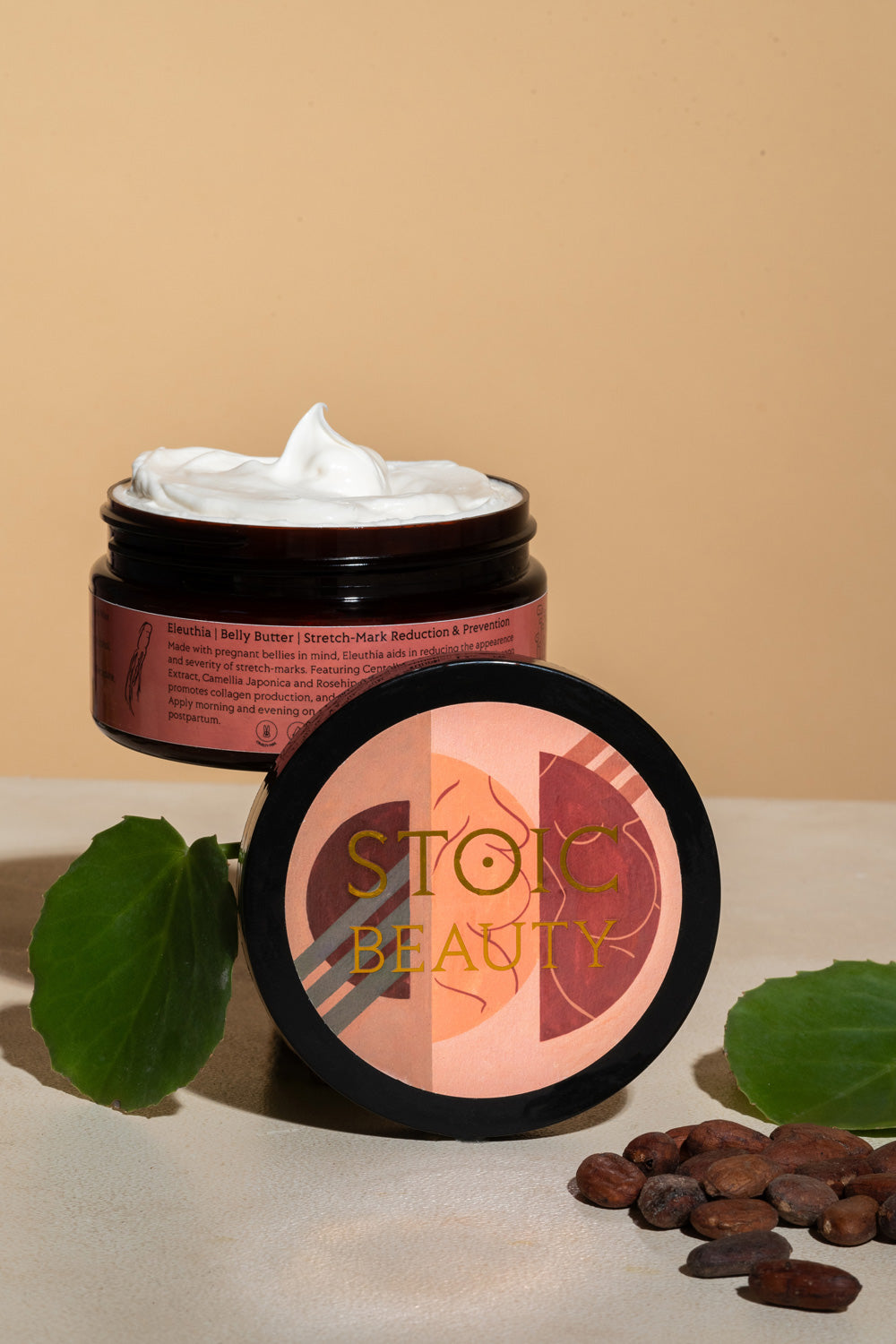
Comments
Hi Lisa Anella,
Thank you so much. A team member will be in touch via email regarding collaboration opportunities.
❤️Team Stoic
Thank you for providing this knowledge, I was looking for this information.
Please provide more information regarding the jobs.
Best microdermabrasion in Montreal